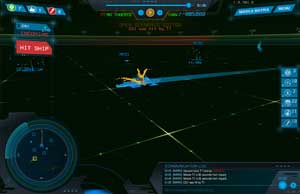Award Won!
Best Government-Developed Game (Available 2008-2021)
Award Won!
Best Social Media Crowdsourcing Game

Strike Group Defender: The Missile Matrix
Office of Naval Research and MIT Lincoln Laboratory
Strike Group Defender: The Missile Matrix is the US Navy’s first prototype multiple player, game-based software-training program that trains, tests and evaluates navy personnel employment and use of Navy Electronic Warfare tactics and systems in highly contested, increasingly difficult wartime situations. It employs state of the art technology and methodology from the video gaming and social media industry to provide an architecture and learning ecosystem that harnesses the power of crowdsourcing, cloud deployment, analytics, and behavioral modeling while maintaining the allure of modern media that is focused on young personnel.
